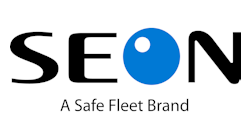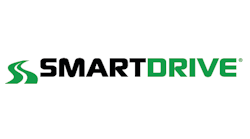Chris Akiyama
Vice President of Sales
Seon Design Inc.
Terrorist threats, shootings, and driver attacks dominate today’s news headlines. Most public transit organizations we work with are putting together detailed plans that use on-board surveillance technology to address those security concerns. These plans include not only equipping every bus in their fleet with a surveillance camera system, but increasing the number of cameras on each bus, integrating live GPS tracking, and enabling real-time video streaming to ensure driver and passenger safety at all times. Transit operators are demanding more from technology, and mobile surveillance suppliers like Seon have responded by developing sophisticated, integrated surveillance systems.
Digital video recorders (DVRs) are becoming more complex and intelligent to allow for activation of specific cameras based on certain events. For example, a camera positioned to capture the driver can be deactivated under normal conditions and activated when an incident occurs to record at high resolution, high frame rate, and high image quality. This video quality has proven critical in investigations into driver attacks, and helped identify attackers. That same camera, along with associated audio, could also be chosen as the camera used to stream video in real-time in an emergency situation. And integration with various ITS components allows for the increase in security and safety for the driver, while leveraging existing ITS investments.
Enterprise-grade video management software makes video retrieval hassle-free, with automatic Wi-Fi downloads, and protects the chain of custody of sensitive footage through restricted access permissions. It delivers advanced DVR health reports, even including individual camera loss, and highlights system problems immediately to ensure capture of all on-board incidents.
Many transit agencies are facing increased demands for video from their exterior cameras to assist law enforcement in crime investigations. DVRs support multiple cameras to ensure complete coverage both in and outside the bus and those support high-definition cameras for detailed surveillance activities are also in demand.
Video playback software has advanced to support detailed security investigations, with a digital zoom feature to help in identifying and prosecuting perpetrators. The software allows you to see additional telemetry information recorded by the DVR such as GPS location, as you review the video. Video synchronized with mapping software can be very useful in retrieving key details about on-board incidents, or pinpointing the exact location where a security breach occurred.
Live viewing capabilities of DVRs can assist in getting real-time information on what’s happening inside the bus in an emergency situation. Transit security personnel can tap into a live video stream from any camera on the bus from virtually anywhere, on the road or in the office, to troubleshoot life-threatening situations in real-time. This live video streaming service has become critical in ensuring driver and passenger safety.
With advancements in image quality and DVR functionality, advanced system health reports, video synchronized with mapping software, live GPS tracking, and live video streaming, transit operators now have all the tools they need to ensure driver and passenger safety in one seamlessly integrated solution.
By Jason Palmer
President
SmartDrive Systems
Working with increasingly tight budgets and limited resources, public transit organizations turn to video technology and analytics to gain better insights and performance measurements on how to improve fleet operations.
According to the National Safety Council, 23 percent of all collisions in 2011 involved mobile phone usage, resulting in 1.3 million collisions. In addition, a recent SmartDrive Distracted Driving Index study found mobile phone usage continues to be a top distraction at 27 percent among the most distracted drivers.
At SmartDrive, we provide an onboard system that collects information directly from vehicles and tracks distractions during speed-triggered events, such as sudden stops, hard cornering, aggressive acceleration and excessive speed. Applying predictive analytics to this database of audio, video and vehicle information provides fleets with focused individualized training and coaching programs for drivers.
Gathering driving performance information and using it proactively can be a great benefit to public transit fleets. In one case a major transit provider equipped more than 5,000 vehicles with the SmartDrive solution. By reviewing risky driving behavior and employing focused safety training programs, the company realized a 50 percent reduction in collision frequency in the first six months of using the system and continues to experience sustained savings and reductions.
Drivers using the program for more than two weeks in 2012 had a distracted driving rate that was 35 percent lower than the rate for drivers prior to starting the SmartDrive Safety Program.
Showcasing the causes of distracted driving among public transit drivers provides an opportunity to take note of exactly what is causing distractions. Using advanced technology to address those issues can help create a safer environment for everyone on the road.
Name: John Rumage
Title: Director of Commercial Sales
Agency Name: Digital Ally, Inc.
Digital Ally combines the capabilities of cameras and recording hardware with management and reporting software to drastically improve transit operator safety. Using a multi-faceted approach, Digital Ally’s Video Event Data Recorders enhance safety during every step of vehicle operation and beyond.
Digital Ally’s DVM-250Plus Video Event Data Recorders can utilize up to eight cameras, each of which can be set to automatically record and display a unique view to the driver based on different triggers. For instance, when a vehicle is put into reverse, a camera mounted to the back of the vehicle can be set to automatically record and display. If a side door is opened or stop bar is raised, a camera looking down that side of the vehicle can be triggered. If the vehicle experiences hard braking, excessive acceleration, severe cornering or an impact, road and driver views can be simultaneously recorded. If the operator encounters problematic passengers, different manual recording options are also available to record inside the vehicle, including a covert footswitch. Cameras have even been shown to calm dangerous passengers if they realize or are notified that they are being recorded.
Recorders can record on a constant loop in addition to capturing specific events, or the system can be set to only record triggered events along with up to 30 seconds before a recording was triggered. This allows the system to capture exactly what happened in any incident, including what caused the event, which is particularly useful to protect operators against accusations and false claims, identify when drivers require additional training, or capture dangerous behavior. The system can even be equipped to stream live events in dangerous situations.
Recorders are also integrated into a rear-view mirror so that they do not interfere with the driver’s line of sight or take up valuable space. The integrated monitor is hidden behind one-way mirror glass to remain invisible when not in use. The system also includes LED light indicators that provide real time driver feedback, such as to remind a driver to slow down if they are performing a potentially dangerous maneuver.
GPS mapping and customizable, comprehensive reports provide insight into drivers’ training needs, dangerous geographic areas, equipment health status and much more. Being self-managed, software can conform precisely to the needs of the operator and does not require ongoing fees.
The detailed vehicle, driver, GPS map and event-trigger data recorded can be displayed during playback, giving an extremely insightful look into incidents. The software also allows notes to be added and important events to be marked in the recordings, all of which can optionally be visible when playing a recording for training purposes. Data, including custom user-added fields, can also be used for searching and retrieving recordings.
The result is a cohesive safety management solution that protects transit operators with proof against fraudulent claims for sizable litigation savings and job security; greatly reduced incidents for improved operator safety as well as reduced vehicle damage, maintenance, fuel and insurance costs; extensive data to identify risky behavior; valuable training examples; GPS tracking for route management and additional fuel savings; and more.
Screening to Improve Operator Safety
by Steven Spencer, Vice President of Transportation, HireRight
As mass transit continues to experience growth and as the economy improves, the need to find qualified operators with excellent safety records becomes a greater challenge for transit authorities. Developing an effective screening program that helps identify top candidates can improve both authority compliance and the quality of operators.
Start with identifying candidates who don’t meet basic requirements. There are a number of initial screens which can help identify unqualified hires rapidly. While these programs don’t stand alone, they can identify the need for further investigation. For bus operators, ordering a DAC Employment History File, Commercial Driver’s License Information (CDLIS) Plus and Pre-Employment Screening Program (PSP) screen, for example, can help bus carriers identify unqualified drivers through timely and cost-effective screens.
Make sure to perform additional screening on your most promising candidates. Authorities then can expand the scope of a background check to include elements like motor vehicle records, employment verifications and drug and alcohol violation history verification, as well as an in-depth criminal background check based on the applicant’s residential history identified through a Social Security Number trace. This step provides an additional layer of background information you can use to evaluate the applicant and meet compliance requirements.
Make sure candidates meet requirements for drug, alcohol and health screening by performing a compliant pre-employment drug test to rule out users of controlled substances, and conduct the physical exam. Whether drug testing is performed in-house or by a provider, carriers need to be sure that regulatory requirements are strictly met. Engaging a Medical Review Officer (MRO) and maintaining strict chain-of-custody for samples are just two of many requirements mandated in federal regulations for covered carriers.
Schedule ongoing substance screening to maintain safety. For hired operators, drug and alcohol tests must be performed randomly and, as applicable, for post-accident, reasonable suspicion, return-to-duty and follow-up testing purposes. These are key elements of a compliant operator safety program, which then can be supplemented by a monthly MVR monitoring program like a driver violation alert for bus drivers. Also for bus drivers, annual driving record reviews and driver physicals should be part of an effective and compliant screening program.
With growing federal oversight, it is incumbent on transit authorities to ensure that their operator screening programs meet all necessary rules and regulations as well as enhance public safety and passenger satisfaction. By approaching a screening program in steps, agencies can hire the best operators, retain that talent, attract new passengers, avoid costly fines, and maintain a higher level of safety and compliance. In conducting their background screening programs, all authorities should also take care to identify and comply with their requirements under the federal Fair Credit Reporting Act and any applicable state laws in connection with the ordering and use of screening reports.
Rodell Notbohm
Founder & CEO, Managing Partner
Apollo Video Technology
One of the best ways to improve transit operator safety is to install onboard public view monitors. Showing riders that they are being recorded is a prime deterrent to abusive, malicious, or criminal activity towards transit operators and other riders.
Traditionally, cameras were meant to be unobtrusive and monitors were installed in control centers, away from public view. However, with an increase in security incidents and attacks on transit operators over the past two decades, increased public awareness, and advances in technology, high resolution public view monitors are now a desirable and cost effective component of an integrated onboard surveillance system.
Studies have shown that if passengers see themselves on camera, it significantly deters criminal behavior and reduces vandalism to agency property. And, the same equipment, when properly integrated with sophisticated management systems, will notify transit supervisors and law enforcement officials of an onboard incident. This provides an added benefit when the transit operator is unable to call for help or unaware that an incident has taken place on the vehicle.
Emphasizing the presence of surveillance equipment to passengers also helps promote an agency’s dedication to, and reputation for public safety and the safety of their employees.
Public view monitors are a powerful tool — helping to assure continuing, successful operation and enhanced safety for transit operators and their riders.







